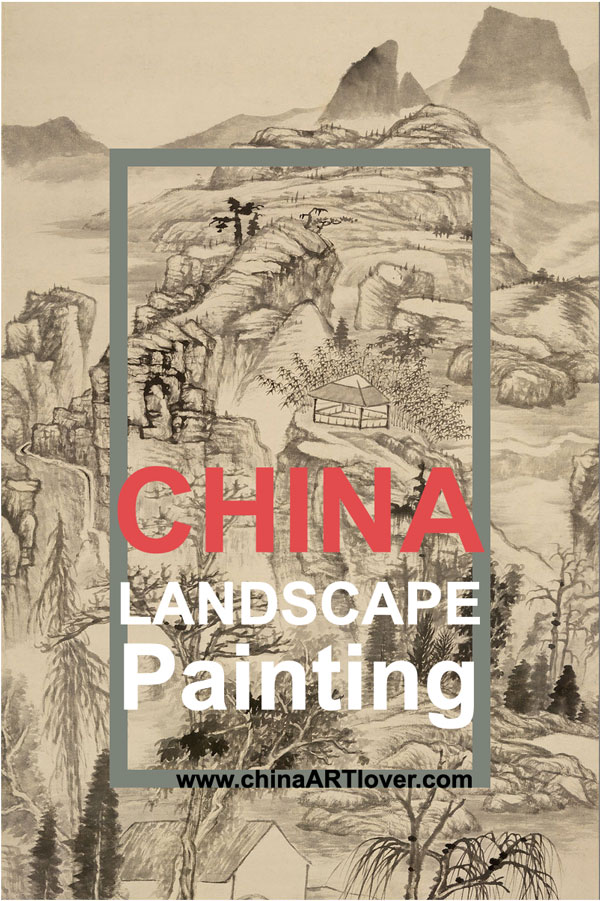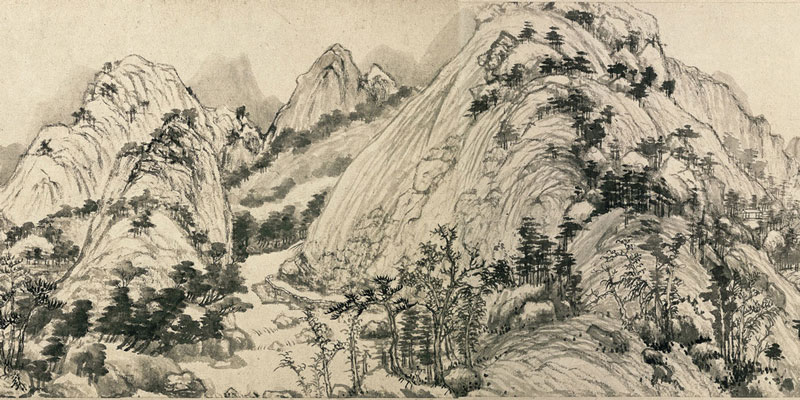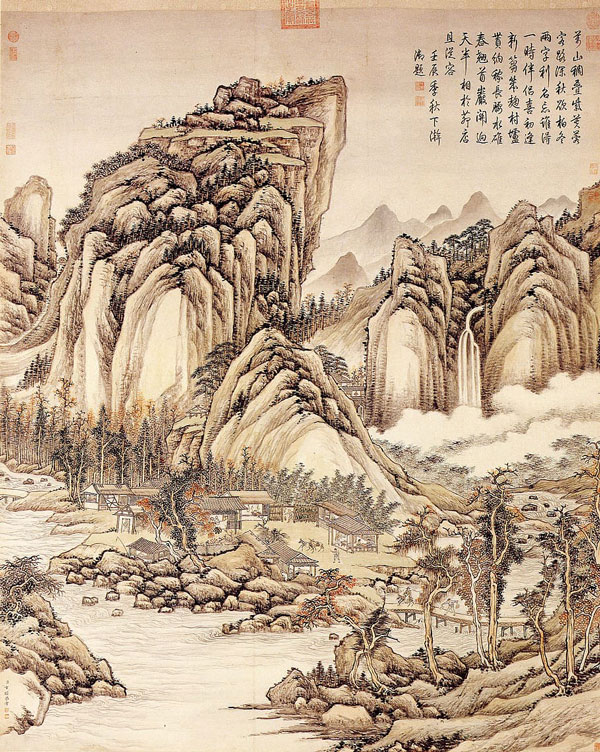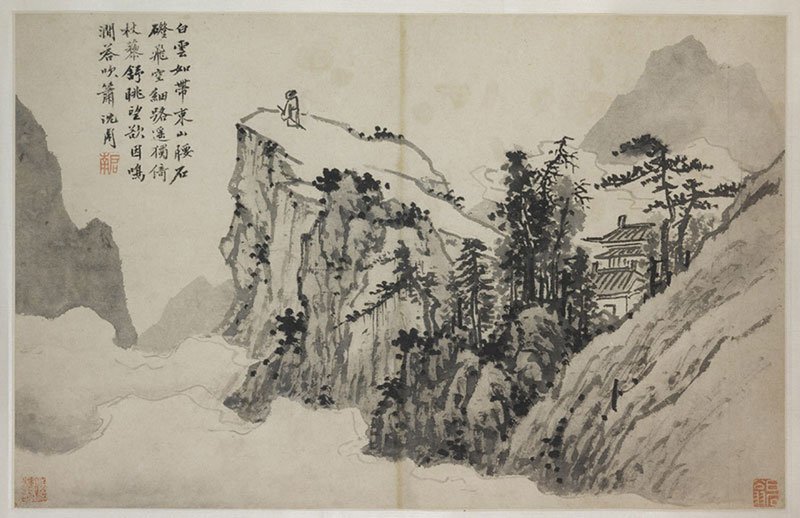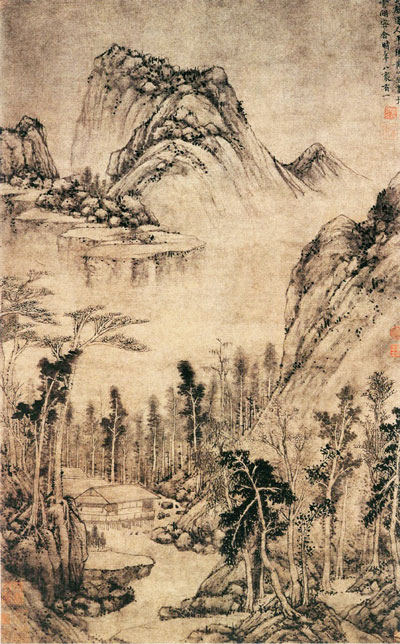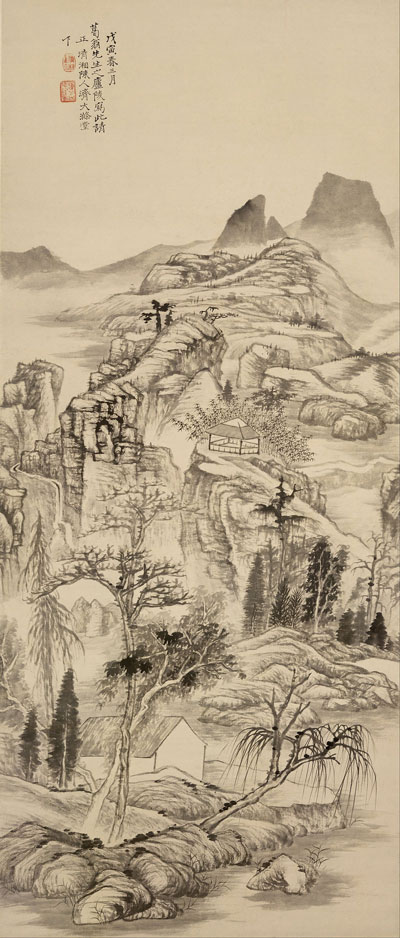Chinese Landscape Painting
Far in the distance stretches a mountainous terrain shooting upwards with sturdy old oak trees shivering in the mountain breeze while a lone man bends over to admire something hidden from the viewer’s eyes. These elements of nature standing with a dramatic air and tone were commonly captured in the works of traditional Chinese landscape painting. Landscape paintings depict a third-person observation of a scene and were mostly developed with pictures of mountains and water.
The birth of landscape paintings is hard to trace but most art critics believe the Tang dynasty played a vital role in the development of landscape paintings in China. The genre of such an art form was taken to extreme heights, with painters expressing their desire to be at one with nature. This idea of communing with nature was one that presented itself in Daoism and Buddhism from which one learns of the importance of being in harmony with the natural world.


Poet on a Mountain top 
The history of landscape paintings in China
There have been long-held arguments over which landscape painting in China was the first one to bring this art form to life, but many art critics do believe in the Nymph of the Luo River to be the first of its kind. Unfortunately, the original copy of Gu Kaizhi’s work is now lost in time.
However, the Tang dynasty popularised the painting style more than anything. Different versions and styles of landscape painting were created, with some following a meticulous brushwork and precise ink lines while others remained purely decorative and spontaneous in their work.
Soon, these two popular versions of the landscape paintings were taken up as two distinctive schools of art in ancient China. These schools, named the Northern School and the Southern School stood as the fundamental basis on which landscape art was created. Most emperors glorified the works depicted in these paintings, mainly because the art resonated with a theme of escapism. In these works of art, there stood an ethereal quality of nature, one which people found to be both comforting and enticing – dragging them into a haven built by nature and far away from the troubles of mankind.

Dong Qichang 
Huang Gongwang – Fuchun Mountains 
Huang Gongwang – Dwelling in Fuchun Mountains
The Chinese Landscape Art in the Modern World
Many people around the world celebrate Leonardo Da Vinci as the one who revolutionized landscape art and brought it into popularity in the Western world. However, Da Vinci’s artistic portrayal mirrors the style that had been used by ancient Chinese artists and it was these artists who truly changed the world of art with their works. Yet, they are hardly known much in history.
But not all was bad about Chinese art being incorporated in Western traditions and culture. In fact, the modern style of landscape art was brought forth by Gao Jianfu and his brother who had studied the art form in Japan. 20th-century contemporary artists, later on, integrated different traditions from around the world with their landscape painting, and Chinese landscape art gradually transgressed into something different.
We can’t argue against this transitioning of the artform as growing globalization has made it possible for different cultures to integrate with each other. Therefore, the traditions that were embodied with Chinese landscape paintings have now been diluted to a multi-cultural artform. While there’s nothing we can do to bring back this traditional artistic style, we can respect how beautiful this form of Chinese art used to be. We can appreciate the representation of Chinese traditions and the incredible intricacy which was needed to create a traditional landscape painting.
Yet, the important thing to remember and admire is the deep meaning that would often embroider these paintings. These paintings have stood as symbols of man’s hidden desire to be united with nature and the need for them to stay rooted in their core being. These paintings depict the fight one constantly has to endure – the fight between new and old, the struggle to not get lost with life’s many courses but to hold on to one’s heritage. The paintings are a true portrayal of their artists’ inner feelings and thoughts as well as struggles, and for that reason mostly, we should never stop appreciating and understanding the transcendental beauty of Chinese landscape art.

Shen Zhou 
Daoji 
Kuo Hsi 
Tang Yin
Finally here is a pretty interersting Video about this topic.
psst… I hope you liked this quick overview of Chinese Landscape Painting. If yes give it some social love and pin, like or share. Much appreciated!
